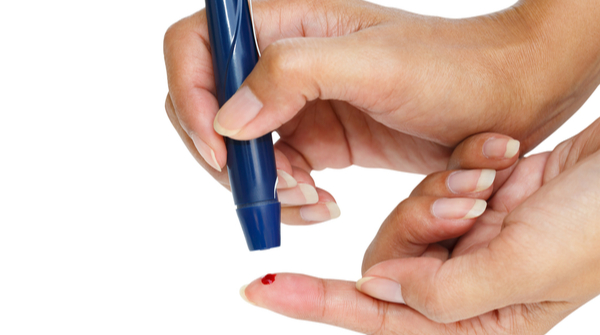Why is it important to keep a check on your blood sugar levels? Monitoring blood glucose readings for diabetics is an integral part of standard diabetes care. Keeping your readings in check on a daily basis can help you stay energized, focused, and in a good mood. However, getting your blood glucose levels right can prove to be challenging at times. Just when you think you’ve factored everything, high or low blood glucose readings can arrive out of nowhere and throw your confidence.

Whether you were recently diagnosed with diabetes or had been living with it for several years, you know how fickle blood sugar levels can be and how important it is that they stay controlled. Several factors can contribute to the fluctuation of a blood glucose reading in people with diabetes.
5 Factors That Have an Impact on Blood Glucose Readings for Diabetics

Environmental Conditions
Whether it’s swelteringly hot or bitterly cold outside, extreme temperatures can interfere with diabetes management. Although this is an external factor and is beyond your control, necessary steps need to be taken to manage your numbers.
Also, Your body reacts differently at different temperatures. Low temperatures can affect circulation and lower blood flow to testing sites. On the other hand, high temperatures can make you dehydrated and concentrate glucose levels. So, always check your diabetes reading and keep your strips at room temperature.
Substances on Your Skin
Anything you touch or put on your skin that contains sugar can end up in your blood sample. and then on your test strip. Also, the presence of dirt or any other substance on the testing site of the skin can hamper the blood glucose reading, and you may experience a false alarm or inaccurate results.
Testing after handling food can produce a high reading because sugar residues on the skin can contaminate the blood sample. Therefore, it is always best to wash and dry your hands before taking your diabetes reading. Also, if you don’t dry your hands thoroughly, the water left on your fingers can dilute the sample.
Amount of Blood
In addition to nicely washing your hands, make sure you follow the user instructions for your meter. Having too much or not having enough blood on the test strip sample area can significantly impact the accuracy of the blood sugar level, and your meter won’t always alert you to the problem or give you an error message.
Also, don’t forget to let the blood flow freely when conducting the test. Squeezing your finger can affect the results. So, apply gentle pressure to the pricked figure and touch a generous drop of blood on the strip. After adding the first drop, Do not add more blood to the test strip.
Meter Issues
Another common problem while monitoring your blood sugar levels is having meter issues. This issue could vary from improper coding or a dirty meter to an improperly inserted strip.
A meter requires coding, which means you’ll need to input a code printed on each test strip vial in order to test it before use. If the code doesn’t match correctly, it could lead to inaccurate readings.
The presence of dirt, dust and other contaminants on the glucose meter can also give an incorrect blood glucose reading. But this was a thing in old meters. You rarely get a false reading with new technology. Still, you must try not to let the meter get too dusty and clean your meter after every reading.
Test Strips
The test strips that come with your glucometer have an expiration date written on the packaging. It is essential to throw out outdated and damaged strips. The expired strips should not be used as they can give incorrect results in most cases.
Moreover, you must store the strips for a blood glucose reading in a tightly sealed container that is away from heat and humidity. Another crucial thing to remember is to use strips specially designed for your glucometer.
Read More: Shocking Facts About Sugar Fluctuations
It is important to keep track of your blood sugar levels with the help of an easy-to-use glucometer. Regular blood sugar testing will expose patterns and help you and your healthcare team control your diabetes. Also, it is advisable to match your readings with a lab result once in a while to check for inaccuracies.
Download the BeatO App and stay updated with your diabetes-related queries.




